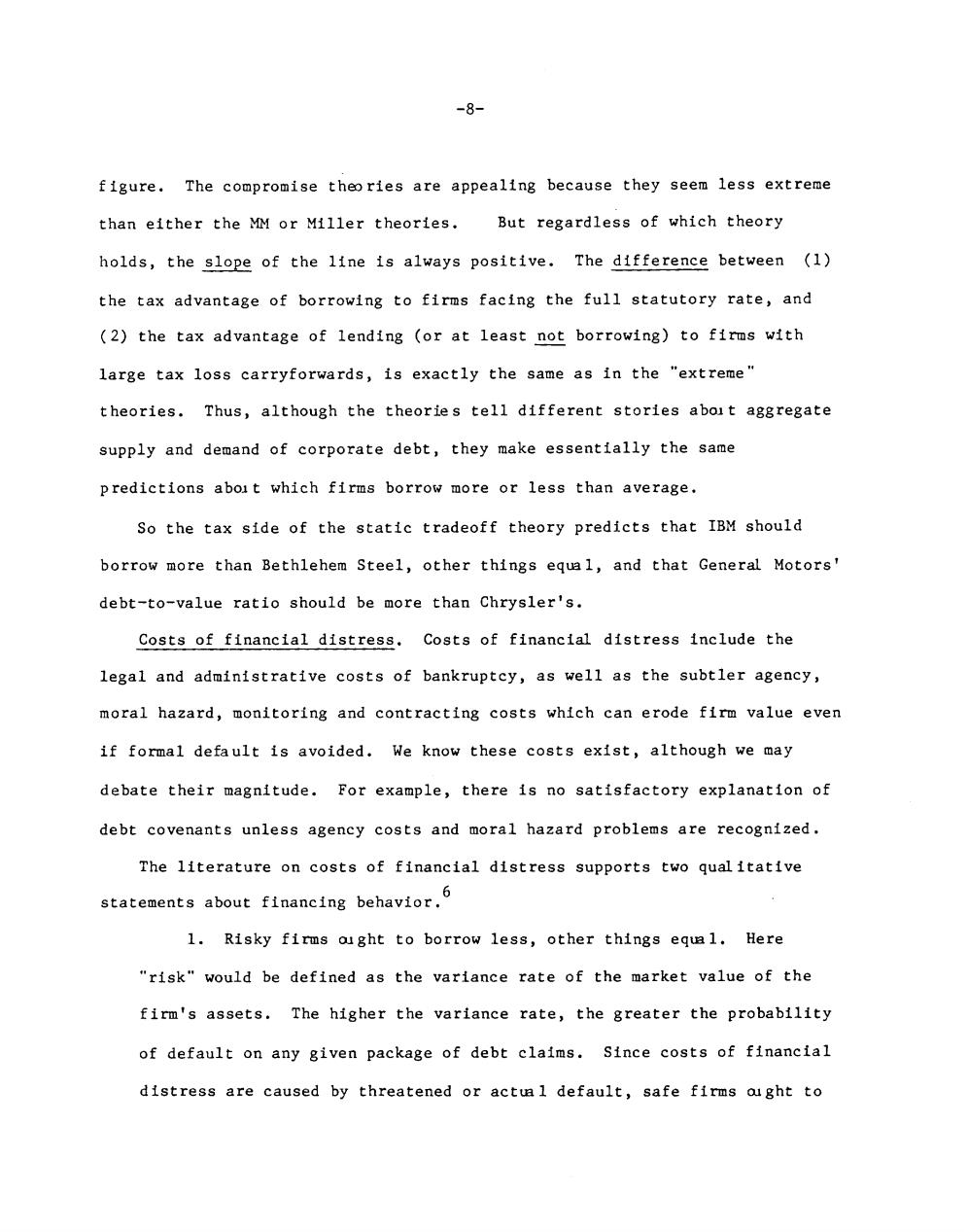正在加载图片...

-8- figure.The compromise theories are appealing because they seem less extreme than either the MM or Miller theories.But regardless of which theory holds,the slope of the line is always positive.The difference between (1) the tax advantage of borrowing to firms facing the full statutory rate,and (2)the tax advantage of lending (or at least not borrowing)to firms with large tax loss carryforwards,is exactly the same as in the "extreme" theories.Thus,although the theories tell different stories aboit aggregate supply and demand of corporate debt,they make essentially the same predictions aboit which firms borrow more or less than average. So the tax side of the static tradeoff theory predicts that IBM should borrow more than Bethlehem Steel,other things equa1,and that General Motors' debt-to-value ratio should be more than Chrysler's. Costs of financial distress.Costs of financial distress include the legal and administrative costs of bankruptcy,as well as the subtler agency, moral hazard,monitoring and contracting costs which can erode firm value even if formal default is avoided.We know these costs exist,although we may debate their magnitude.For example,there is no satisfactory explanation of debt covenants unless agency costs and moral hazard problems are recognized. The literature on costs of financial distress supports two qualitative statements about financing behavior.6 1.Risky firms ought to borrow less,other things equa l.Here "risk"would be defined as the variance rate of the market value of the firm's assets.The higher the variance rate,the greater the probability of default on any given package of debt claims.Since costs of financial distress are caused by threatened or actul default,safe firms oght to